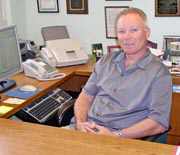Bill Snyder is used to the ups and downs of federal funding.
For the last 30 years, the Secaucus native has been at the helm of both the Secaucus and Hackensack public housing authorities as director. Even though the Bush administration plans to cut the $31 billion budget of the US Department of Housing and Urban Development [HUD] down to a quarter of its current size, Snyder said he would find alternative solutions to funding and go on with business as usual.The Secaucus Housing Authority manages 307 units. There are three senior buildings – the Elms (100 units) on Centre Street, and Kroll Heights (75 units) and Rocco Impreveduto Towers (100 units) on County Avenue. Patriot Commons on Paterson Plank Road holds 20 affordable housing units, and the in-progress Riverside Court Meadowlands Parkway development will have 12 affordable housing units. “A lot of my colleagues and housing advocates want to make this a partisan issue, but that is not really the truth,” said Snyder. “HUD funding has been cyclical over the years in regard to budget cuts and increases.” HUD began as a Cabinet-level agency through the Department of Housing and Urban Development Act of 1965. In 1970, a Federal Experimental Housing Allowance Program and Community Development Corporation were introduced through a Housing and Urban Development Act. The Community Development and Section 8 programs were created during the Nixon administration. “You have to consider what each administration is responding to,” Snyder said. “Bush has the war on terrorism, massive deficit and borrowing to contend with. These programs are the first to get cut.” In a December memo from the White House Office of Management and Budget to HUD, the White House announced a move to eliminate ineffective economic development projects and programs. The poor, elderly and disabled are affected, as slashed funding will be applied to Section 8 housing and public housing development. Section 8 is a program that gives certificates to low-income families to help pay their rent. In Secaucus, within the fiscal year 2004/2005, the amount of Section 8 housing vouchers has been reduced by 250 to 220. “It’s a tough situation,” said SHA Deputy Executive Director Mike Altilio. “The budget constraints provide new problems for low income residents who must live within the dollar amount provided by Section 8 housing and what the fair market rents are.” The SHA dealt with the reduction of vouchers through attrition, Altilio said. Residents who moved away, passed away or went off the program were not replaced by new applicants. Those remaining in the program are “further stymied” when the reduction in Section 8 payment standard puts them over the percentage of allowable income needed to meet rising rent costs. The resident is faced with the possibility of moving to a more affordable unit. Current Section 8 rules limit tenant rents to 30-to-40 percent of their income. “The apartments in Secaucus are not cheap. The tenants would most likely look out of town,” Altilio said. Section 8 housing choice vouchers have been allowing low-income families to find safe, affordable housing since 1975. HUD officials maintain that by revamping the current programs, self-sufficiency and home ownership will be encouraged. The proposed cuts to the Section 8 Housing Voucher Program is to be cut by several billion dollars over the next five years. “Every year, rents go up, and the impact of cuts is compounded. You learn to deal with it,” said Snyder.
Health program cut
For new sources of income for the SHA, Snyder is working on an arrangement with the Port Authority of New York and New Jersey to place a camera on the Kroll Heights Senior Housing building that would monitor traffic on the NJ Turnpike.
To save money, he will not replace SHA retirees, and on May 31, he cut an innovative nursing service at the senior housing units, which includes Kroll Heights, The Elms and Impreveduto Towers.
The $55,000 program was only a “small solution to the Health Care Crisis,” said Snyder. He said the free service provided a savings to the federal government since the elderly disabled residents could stay in senior housing longer instead of going to nursing homes. A nurse visited tenants twice a week and if a tenant was recuperating from a hospital visit or failing in health, a homemaker would be available to help out.
“The program provided a sense of security for the tenants when they couldn’t get to the doctor or needed extra assistance,” Social Services Coordinator Nina Villanueva. “The loss of this service has had a little bit of a negative effect.”
